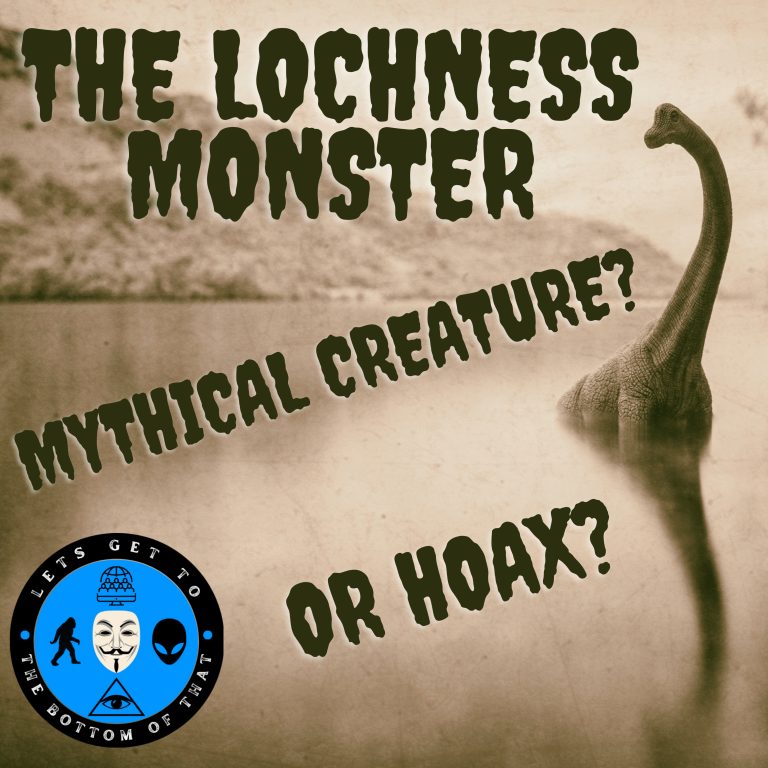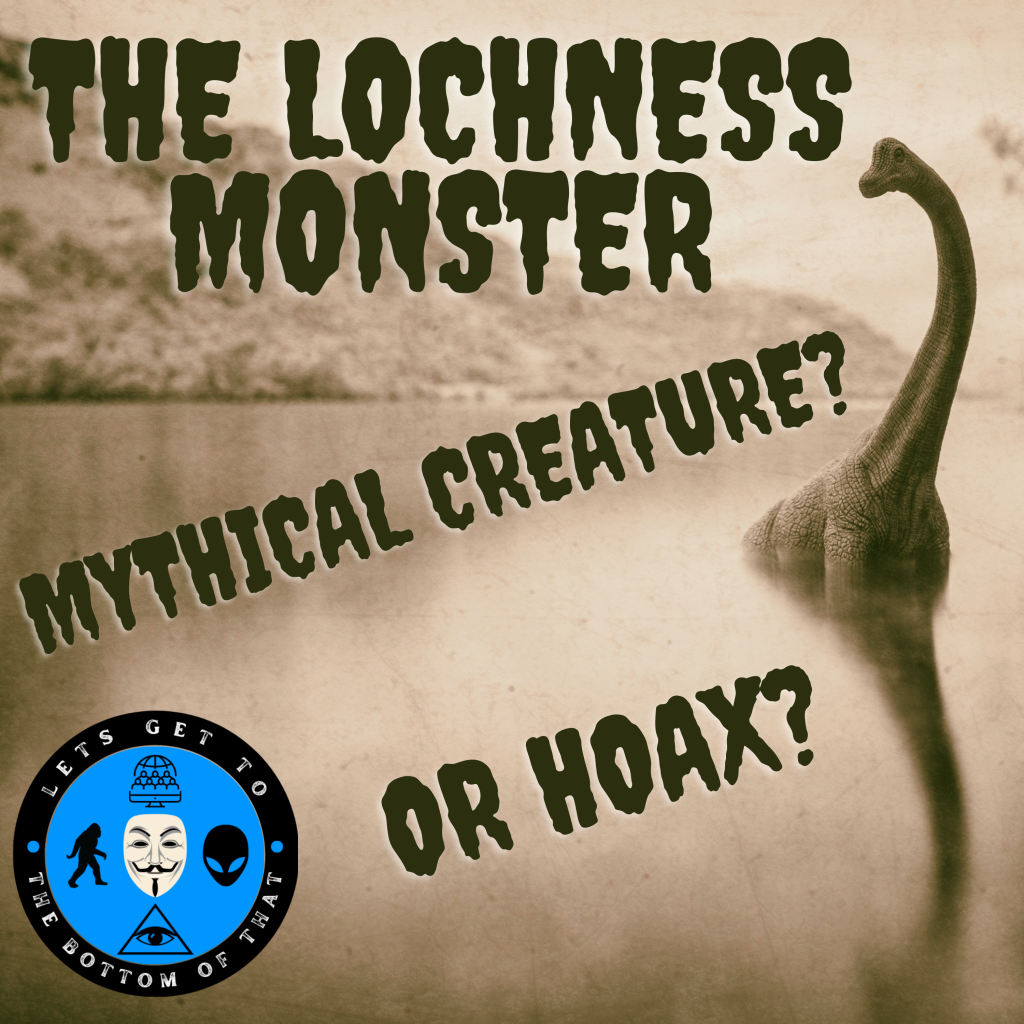
This show will get to the bottom of all those questions you need answers to. Each week, we will cover a topic that has been left unattended in the public square, with unanswered questions surrounding the “official story.” You will be able to determine on this show if the topic has been deemed a “Conspiracy” or a “Conspiracy Theory”.
If you want to support the show, you can become a subscriber and get access to bonus content. Click here to support https://creators.spotify.com/pod/profile/bottomofthat/subscribe
The modern legend of the Loch Ness Monster is born when a sighting makes local news on May 2, 1933. The newspaper Inverness Courier relates an account of a local couple who claim to have seen “an enormous animal rolling and plunging on the surface.” The story of the “monster” (a moniker chosen by the Courier editor) becomes a media phenomenon, with London newspapers sending correspondents to Scotland and a circus offering a 20,000-pound sterling reward for the capture of the beast. After the April 1933 sighting was reported in the newspaper on May 2, interest steadily grew, especially after another couple claimed to have seen the animal on land.
This episode topic starts about 15:00 mins from beginning of show we first went over some comments of listeners and then we had an update on the MH370 episode and how the Rothschilds are connected with this missing flight.

The Loch Ness Monster affectionately known as Nessie, is a creature in Scottish folklore that is said to inhabit Loch Ness in the Scottish Highlands. It is often described as large, long-necked, and with one or more humps protruding from the water. Popular interest and belief in the creature has varied since it was brought to worldwide attention in 1933. Evidence of its existence is anecdotal with a number of disputed photographs and sonar readings.
The scientific community explains alleged sightings of the Loch Ness Monster as hoaxes, wishful thinking, and the misidentification of mundane objects.[4] The pseudoscience and subculture of cryptozoology has placed particular emphasis on the creature.

The modern legend of the Loch Ness Monster is born when a sighting makes local news on May 2, 1933. The newspaper Inverness Courier relates an account of a local couple who claim to have seen “an enormous animal rolling and plunging on the surface.” The story of the “monster” (a moniker chosen by the Courier editor) becomes a media phenomenon, with London newspapers sending correspondents to Scotland and a circus offering a 20,000 pound sterling reward for capture of the beast. After the April 1933 sighting was reported in the newspaper on May 2, interest steadily grew, especially after another couple claimed to have seen the animal on land.
Amateur investigators have for decades kept an almost constant vigil, and in the 1960s several British universities launched sonar expeditions to the lake. Nothing conclusive was found, but in each expedition the sonar operators detected some type of large, moving underwater objects. In 1975, another expedition combined sonar and underwater photography in Loch Ness. A photo resulted that, after enhancement, appeared to show what vaguely resembled the giant flipper of an aquatic animal. Further sonar expeditions in the 1980s and 1990s resulted in more inconclusive readings. Revelations in 1994 that the famous 1934 photo was a complete hoax has only slightly dampened the enthusiasm of tourists and investigators for the legendary beast of Loch Ness.
On August 22, 564, some historians say Columba, a Christian leader, reported seeing the animal that would become known as the Loch Ness Monster in Loch Ness, Scotland. Columba was an Irish priest (later a saint) who was visiting Scotland, and reportedly compelled the monster to not attack one of Columba’s followers. The Loch Ness Monster is probably the most famous target of cryptozoology, the study of animals whose existence has not been proven. Cryptozoology is not a science. Cryptozoologists search for mythical creatures called cryptids. Thousands of cultures all over the world report cryptids. Besides the Loch Ness Monster, other lake cryptids include Champ (in Lake Champlain, United States and Canada); Issi (in Lake Ikeda, Japan); and the Lagarfljot Worm (in Lagarfljot Lake, Iceland). Other cryptids include chupacabras, blood-sucking creatures that threaten livestock throughout Latin America; bunyips, which lurk in Australia’s swamps; dingoneks, “jungle walruses” found in lakes and rivers in central Africa; and, of course, Bigfoot, who stalks old-growth forests of the Pacific Northwest.
17th June 2023
A tourist visiting Loch Ness claimed he spotted a mysterious 65ft-long shape moving through the water – sparking rumours of Nessie in the water. Etienne Camel was visiting the famous lake with his wife Eliane when he then spotted the odd shape while taking pictures. “I am a man of science so I never believed that the Loch Ness monster is a prehistoric animal. But when I was taking a picture I saw this long, long shadow. “I called my wife over and we saw the shadow move.” “I thought maybe it was a cloud, but there was none or a boat, but none was near or reefs.
The best evidence for Nessie is a sonar contact taken by Ronald McKenzie who operates a boat called the Spirit of Loch Ness. About 3 years ago he got crystal clear sonar contact about 600 feet down. It was not there 1 hour before and was not there 1 hour later. One solid object the size of a transit van.
1965 9 eye witness observed Nessie moving around for up to an hour.
2021 we had 6 sightings and another 10 from the Loch Ness web cam.
January 22, 2021
August 22, 2021
March 23 2022


